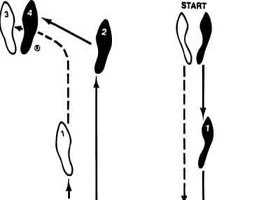
 Many Canadians are probably wondering why Canada’s big banks did not match the Bank of Canada’s cut in the overnight rate a few weeks ago. The Bank of Canada (BoC) lowered its target for overnight funds by 25 basis points, from 1.00% to 0.75% — a level last seen in late 2010. In recent memory the banks have responded immediately with an equal drop in the prime rate. This time Canada’s banks only reduced the lending rate for their best customers by 15 basis points, from 3.00% to 2.85%.
Many Canadians are probably wondering why Canada’s big banks did not match the Bank of Canada’s cut in the overnight rate a few weeks ago. The Bank of Canada (BoC) lowered its target for overnight funds by 25 basis points, from 1.00% to 0.75% — a level last seen in late 2010. In recent memory the banks have responded immediately with an equal drop in the prime rate. This time Canada’s banks only reduced the lending rate for their best customers by 15 basis points, from 3.00% to 2.85%.
What’s going on?
Until the rate cut, the BoC and the banks have been like championship ice dancers, skating to the same tune. When the BoC cut its target rate in response to the 2007-2009 financial crisis, the banks didn’t miss a beat, lowering their prime rates from 6.25% in late 2007 to 2.25% by early 2009. Then when the central bank moved its target up, the banks moved in lock-step with prime gliding back to 3.00% by September 2010.
But events after the rate cut were not so choreographed. Not only did the banks fail to follow Governor Poloz’s lead, they took the weekend to think about it and then decided to cut by less. Was this just a slip in their routine, or are we witnessing the end of this partnership?
To answer this question, you need to consider today’s unusual circumstances. The Canadian economy has been on thin ice for the past year. While the strength in the U.S. economy has been welcome, the outlook for Europe and key emerging markets has been worsening. The fall in the oil prices and the Canadian dollar have been rapid. Add high debt levels of Canadian households and historically low interest rates, and you are now skating in a storm.
The BoC tries to avoid surprising markets, but the latest move caught everyone off guard. A rate decrease signals there is trouble ahead. But with overnight rates near zero, there is not much room for maneuver. Governor Poloz saw enough risks in the outlook that he felt it was prudent to take out some insurance. Unfortunately he decided to switch directions without signaling his intentions to his partners, leading to this stumble.
The banks were wrong-footed and took a moment to recover. They probably took a hard look at their costs, just like Tim Horton’s did last November. In normal times a rate cut translates into a lower funding cost for banks, which they can pass on to customers. But with overnight rates already so low, the BoC’s move has little impact on bank costs. It doesn’t necessarily reduce what banks are paying for customer deposits, nor the cost to raise money in bond markets. In this setting, any cut in the prime rate will lower bank profitability. Even worse, it might encourage Canadians to take on more debt, worsening the risk of future credit defaults.
My own view is the banks are reconsidering their dance partner. They may start paying less attention to Governor Poloz and listening more to their shareholders. Bank profits are under pressure due to higher costs from new regulations and greater IT spending to protect against cyber threats. So don’t be surprised if the banks skate off in their own direction if the BoC cuts rates again. As someone with a variable rate mortgage, I am disappointed. But as someone with my retirement savings and my childrens’ RESPs invested in Canada’s stock market (and by default Canada’s banks), I am also relieved.
Michael R. King is Assistant Finance Professor, Ivey Business School, Western University
